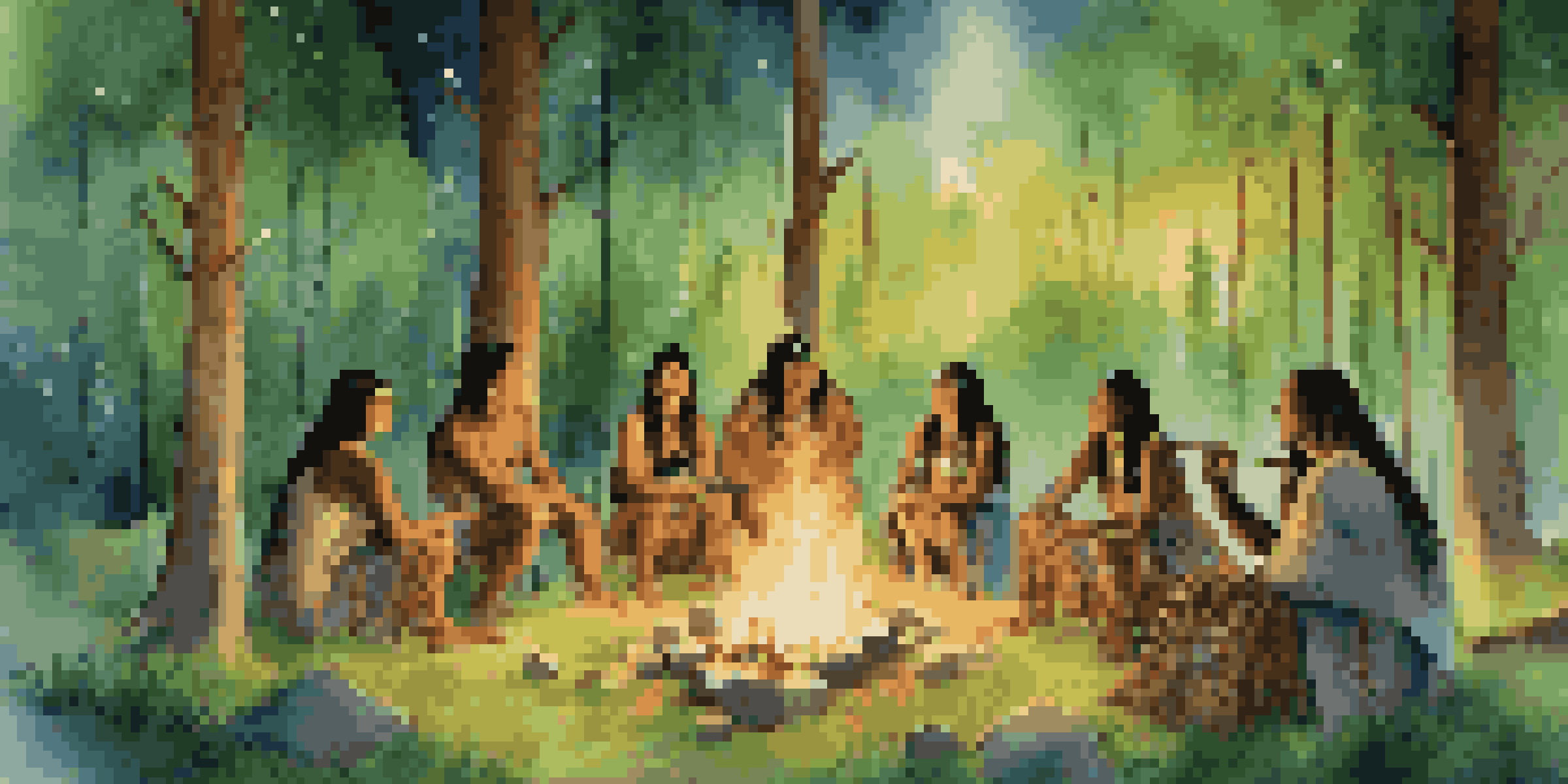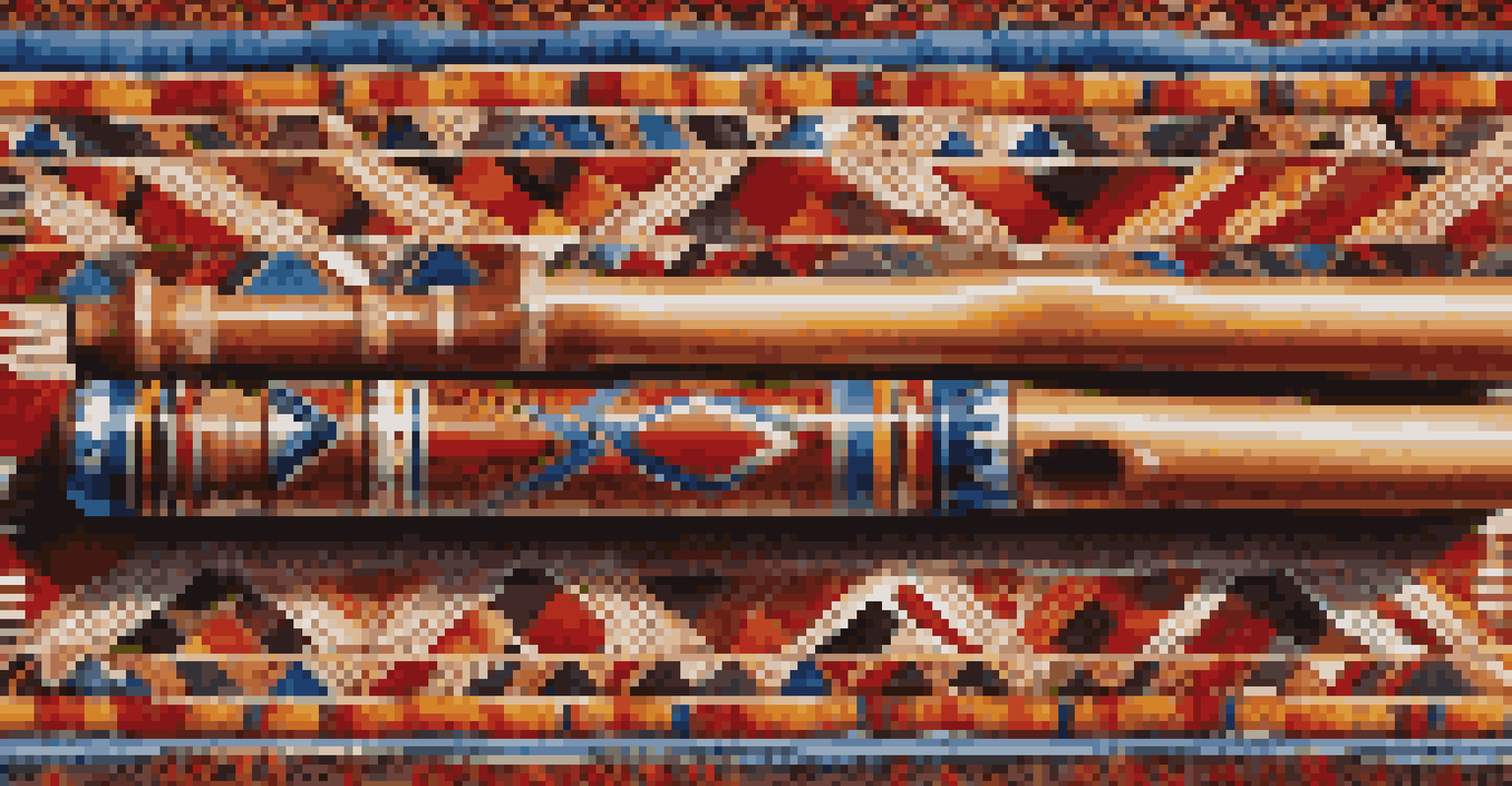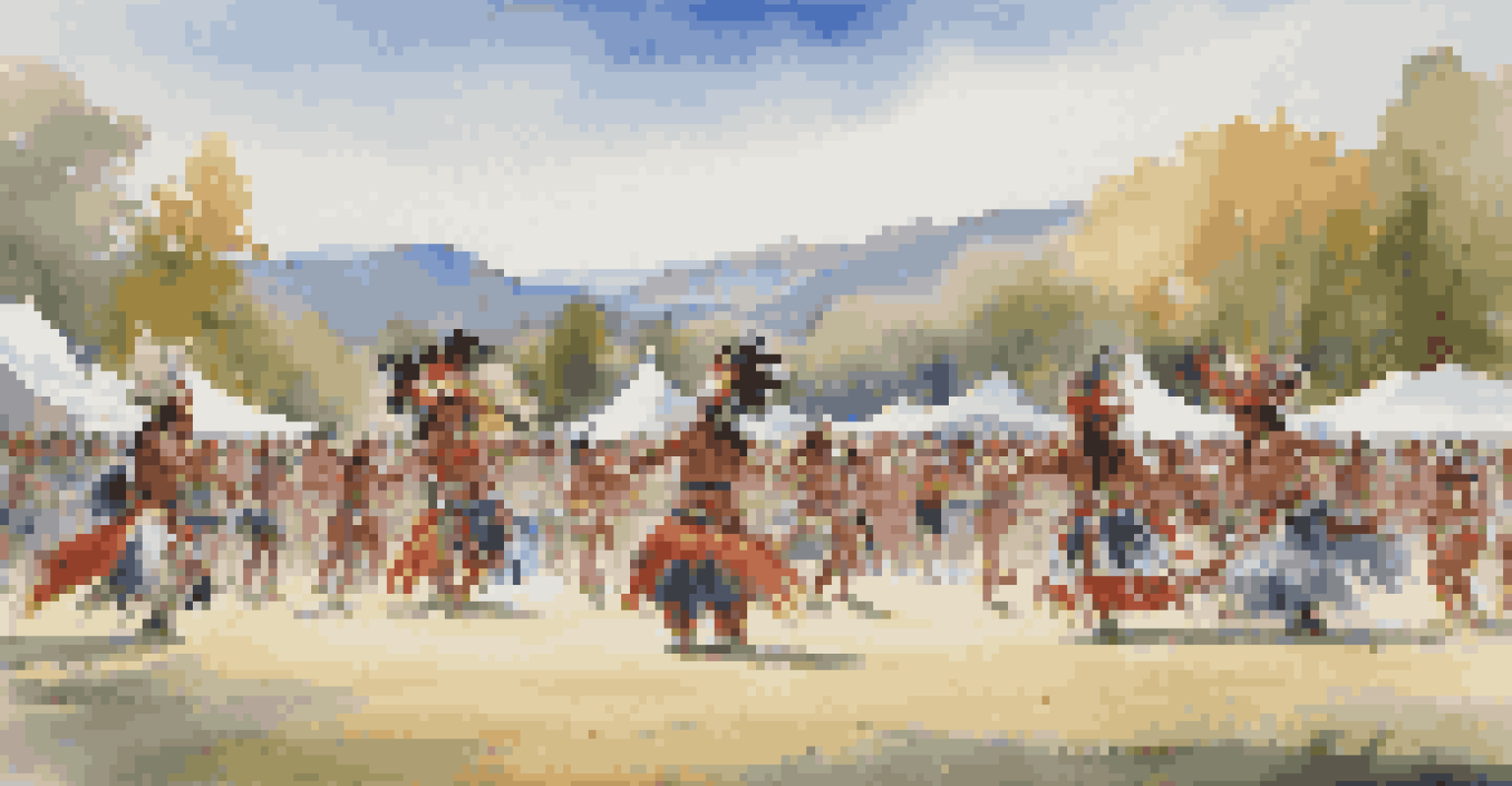Exploring the Role of Music in Native Spiritual Practices

Understanding the Significance of Music in Native Cultures
Music is a vital thread woven into the fabric of Native spiritual practices. It serves not only as a form of expression but also as a means of connecting to the divine. For many Indigenous peoples, music embodies stories, histories, and cultural identities that resonate across generations.
Music is the shorthand of emotion.
In these cultures, music often transcends mere entertainment; it becomes a conduit for spiritual experiences. Whether through songs, chants, or instrumental pieces, music helps facilitate rituals and ceremonies that mark significant life events. This deep-rooted significance underscores the role music plays in forging connections within the community.
Furthermore, understanding this significance invites us to appreciate the diversity of Native music styles and traditions. Each tribe may have its unique musical practices, reflecting their distinct cultural narratives while still sharing a common thread of spirituality.
Types of Music Used in Spiritual Practices
Native spiritual practices utilize a variety of musical forms, each serving specific purposes. Ceremonial songs, for instance, are often performed during sacred rituals to invoke blessings or honor ancestors. These songs can vary widely in style and structure, depending on the cultural context.

Another important type is storytelling through music, where songs narrate the tribe's history or moral lessons. This practice not only entertains but also educates the younger generations about their heritage and values. The rhythmic patterns and melodies used facilitate memorization, allowing wisdom to be passed down.
Music's Spiritual Role in Native Cultures
Music is integral to Native spiritual practices, serving as a means of expression and connection to the divine.
Moreover, the use of instruments like drums, flutes, and rattles adds depth to the musical experience. These instruments often carry spiritual meanings and are integral to the connection between the physical and spiritual worlds, enhancing the overall impact of the music.
The Role of Music in Healing Practices
Music serves as a powerful tool in healing practices within Native spirituality. Many tribes believe that sound vibrations can facilitate healing by restoring balance and harmony to the body and spirit. Traditional healers often incorporate music into their rituals, using specific songs to address emotional and physical ailments.
The earth has music for those who listen.
For example, during healing ceremonies, drumming and singing create an environment conducive to spiritual and emotional release. Participants may feel a sense of catharsis, allowing them to process trauma and reconnect with their inner selves. The communal aspect of music also fosters a sense of belonging and support.
Additionally, music's role in healing is not just limited to ceremonial contexts. Everyday songs and chants can provide comfort and resilience, helping individuals cope with life's challenges. This everyday integration of music into healing practices highlights its importance in maintaining well-being within Native communities.
Ceremonial Music and Spiritual Rituals
Ceremonial music is a cornerstone of many Native spiritual rituals, marking significant events and transitions. These rituals often involve elaborate songs that are meticulously crafted to honor specific deities or natural elements. The performance of these songs is seen as a way to communicate with the spiritual realm.
During ceremonies such as powwows, music plays a central role in uniting the community in celebration and remembrance. The rhythms and melodies resonate with participants, creating a shared experience that strengthens cultural ties. This collective participation in music and dance is vital for cultural preservation and continuity.
Healing Through Music in Rituals
Many Native tribes use music as a healing tool, believing that sound vibrations restore balance to the body and spirit.
Moreover, the specific instruments used in these ceremonies, like drums and flutes, hold symbolic meanings that enhance the spiritual atmosphere. They are not just tools for sound, but sacred objects integral to the rituals, creating a bridge between the physical and spiritual worlds.
The Influence of Nature on Native Music
Nature profoundly influences the music created and used in Native spiritual practices. Many songs are inspired by the sounds of the natural world, whether it's the rustling of leaves, the calls of animals, or the flowing of water. These elements are often incorporated into musical compositions, reflecting a deep respect for the environment.
For instance, songs may mimic bird calls or rhythmically represent the sound of wind, creating a direct connection to the land. This intertwining of music and nature emphasizes the belief that all living things are interconnected, reinforcing the spiritual relationship between Indigenous peoples and their surroundings.
Additionally, seasonal changes inspire specific songs and rituals, marking the cycles of life and honoring nature's gifts. This relationship between music and nature not only enhances spiritual practices but also encourages a sustainable way of living that respects the earth.
Modern Adaptations of Native Music in Spiritual Contexts
As society evolves, so does the music used in Native spiritual practices. Contemporary Native artists often blend traditional musical elements with modern genres, creating a dynamic fusion that resonates with younger generations. This adaptation ensures that the spiritual significance of music remains relevant in today's world.
For example, many Indigenous musicians incorporate electronic sounds or hip-hop rhythms into their music while retaining traditional themes and messages. This blending not only showcases cultural resilience but also invites broader audiences to engage with Native spirituality through music.
Modern Adaptations of Native Music
Contemporary Native artists blend traditional elements with modern genres, ensuring the spiritual significance of music remains relevant.
However, it's essential to approach these adaptations with respect and understanding. Maintaining the integrity of traditional practices while exploring new musical avenues can be a delicate balance, and dialogue within communities is crucial in this evolution.
Preserving Indigenous Musical Traditions
Preserving Indigenous musical traditions is vital for maintaining cultural identity and spiritual practices. As globalization and modernization pose challenges, many Native communities are actively working to keep their music alive. This involves not only passing down traditional songs but also educating younger generations about their cultural significance.
Community workshops and educational programs play a crucial role in this preservation effort. By engaging youth in learning traditional instruments and songs, communities are fostering a sense of pride and continuity. This transmission of knowledge is a powerful way to ensure that these traditions endure.

Moreover, collaborations with non-Indigenous musicians and organizations can also promote awareness and appreciation of Native music. These partnerships can create platforms for Indigenous voices, allowing their music to reach wider audiences while respecting its cultural roots.